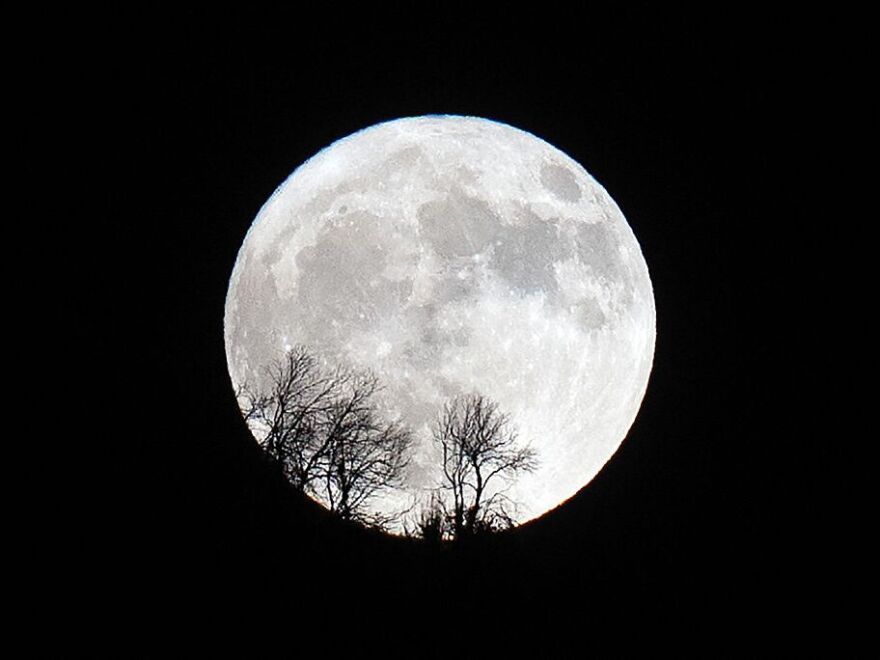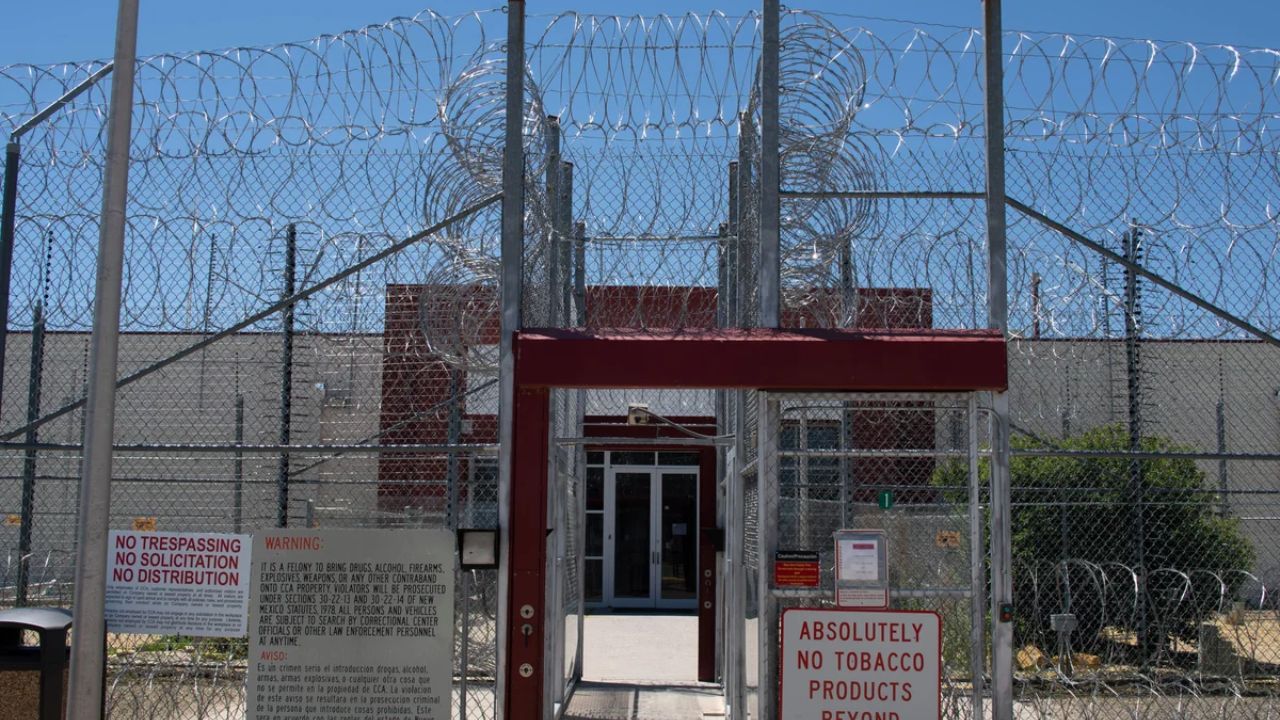Plans to install a nuclear reactor on the moon to power a human base are being expedited by the Trump administration.
In July, interim NASA Administrator Sean Duffy delivered an order to NASA staff, which NPR was able to receive, stating that the reactor will launch to the moon by 2030. Some members of the scientific community are worried about the ambitious goal’s hefty price and possibly impractical timeline.
As China and Russia also intend to use nuclear power on the moon by the end of the decade, the plan aligns with the U.S. objective of sending astronauts back to the moon and becoming a leader in space exploration. During a press conference on Tuesday, Duffy stated that the United States is lagging behind in its efforts to use nuclear energy as a power source on the moon in order to support life there.
“Everyone agrees that a particular area of the moon is the greatest. There, we have ice. There, we have sunlight. Duffy stated, “We want to arrive first and assert that for America.”
Here are some facts about the administration’s intentions and the potential feasibility of utilizing a nuclear reactor as a power source on the moon.
Why a nuclear reactor on the moon?
Solar panels are usually used to power spacecraft that are positioned on the moon or orbit the Earth. However, according to space-based nuclear power expert Roger Myers, solar power alone will not be sufficient for any long-term human colonization of the moon.
“The sun sets on the moon for two weeks,” he states. “The sun and batteries don’t work, therefore you need to have another source of energy. We will need to use nuclear energy.
The instruction now calls for NASA to launch a nuclear reactor with an energy output of at least 100 kilowatts. According to scientists, this could only power 70 to 80 households and would provide less electricity than normal nuclear reactors in the United States.
How would it work?
According to Bhavya Lal, a former associate administrator for technology, policy, and strategy at NASA, nuclear reactors on the moon function similarly to those on Earth. Heat from a regulated nuclear reaction in uranium fuel can be converted into electrical power.
The U.S. Department of Energy says that’s a lot like the 94 commercially operated nuclear reactors in the U.S. According to the department, a typical nuclear reactor in the United States produces at least 1 gigawatt of power, or 100 million LED light bulbs.
According to Lal, “on Earth we have an atmosphere, so we can cool these reactors,” which is the primary distinction between the planet and the moon. Water is used to cool many nuclear reactors, and the surplus heat is then released into the surrounding environment.
On the moon, nuclear reactors must release their surplus heat straight into space because there is neither atmosphere or body of water. Large radiators that can assist in dissipating the heat load are therefore necessary. Additionally, the reactors must function at temperatures higher than those seen on Earth due to their design.
What are the risks and dangers?
Although it is unlikely, a reactor could be harmed by meteorite hits and moonquakes. Furthermore, according to Patrick McClure, chief operating officer of SpaceNukes, a business that develops nuclear reactors for space, “there’s no wind, there’s no water that would move the radioactivity around,” even if something did occur on the surface. This contrasts with Earth, where wind and rain can disperse radioactive fallout over great distances.
According to Kathryn Huff, professor of nuclear, plasma, and radiological engineering at the University of Illinois at Urbana-Champaign, the main safety concern is not whether a nuclear reactor is on the moon, but rather how to get it there and what will happen when it reaches the end of its useful life. The Department of Energy estimates that most reactors in the United States can run for at least 80 years, while it is unclear how long the reactor could last.
“It cannot blow up the moon,” stated Huff, who under the Biden administration served as the Department of Energy’s assistant secretary for Nuclear Energy. “If you’re considering bringing that reactor off the moon someday, making sure that its reentry into the Earth’s atmosphere is flawless will be pretty important because I think no one really wants to see a repeat of the Kosmos 954 [incident].”
When Russia’s nuclear-powered satellite Kosmos 954 malfunctioned during its reentry into Earth’s atmosphere in January 1978, it detonated over Canada, dispersing radioactive debris throughout the nation.
According to McClure, any lunar reactor’s uranium fuel would have extremely low radiation levels upon launch. “The actual doses to the public would be far below the minimum [set by safety regulations],” he argues, even in the event of an accident during the rocket’s liftoff. Furthermore, according to him, the reactor wouldn’t be turned on until it obtained a “nuclear safe orbit” that was at least 621 miles above the ground.
Is this the right time?
The announcement that NASA will be building moon-based reactors comes at a very difficult moment for the organization.
Through the Trump administration’s deferred resignation program, at least 20% of NASA employees have chosen to quit the organization, and the administration has also suggested cutting NASA’s funding. Although the House and Senate are debating suggestions that would maintain agency spending around the current budget, a fiscal year 2026 budget request that was announced in May would cut funding for the agency by around 24%, from over $25 billion to nearly $19 billion.
Recent suggestions to abandon some NASA programs, including financing for future moon expeditions, were reversed, giving the agency a boost. Nearly $10 billion in new money for NASA until 2032 is provided by Trump’s One Big Beautiful Bill Act, which also supports ambitions to return to the moon and Mars.
Much of that money could be used for the reactor project. According to a recent study by Lal and Myers, the cost of building such a reactor would be approximately $3 billion over five years.
Both China and Russia might “potentially declare a keep-out zone which would significantly inhibit” the U.S. from establishing presence if it is not the first nation to reach the moon, according to Duffy’s directive.
However, it will be very challenging to reach the five-year deadline to send a nuclear reactor back to the moon, according to Huff. Additionally, she recommends a multi-year licensing procedure that incorporates feedback on nuclear safety measures both before and after launch from a number of agencies, including the Energy Department and NASA.
Huff said that the United States should put the mission’s research first rather than concentrating on being the first.
“You have to center a lot of this work, especially in space, in the scientific and technological community rather than in a community of the military and defense,” she stated. “I do hope to see that NASA’s leadership in this space will imbue the project with a sense of international collaboration with our friends and allies.”
Copyright 2025 NPR






